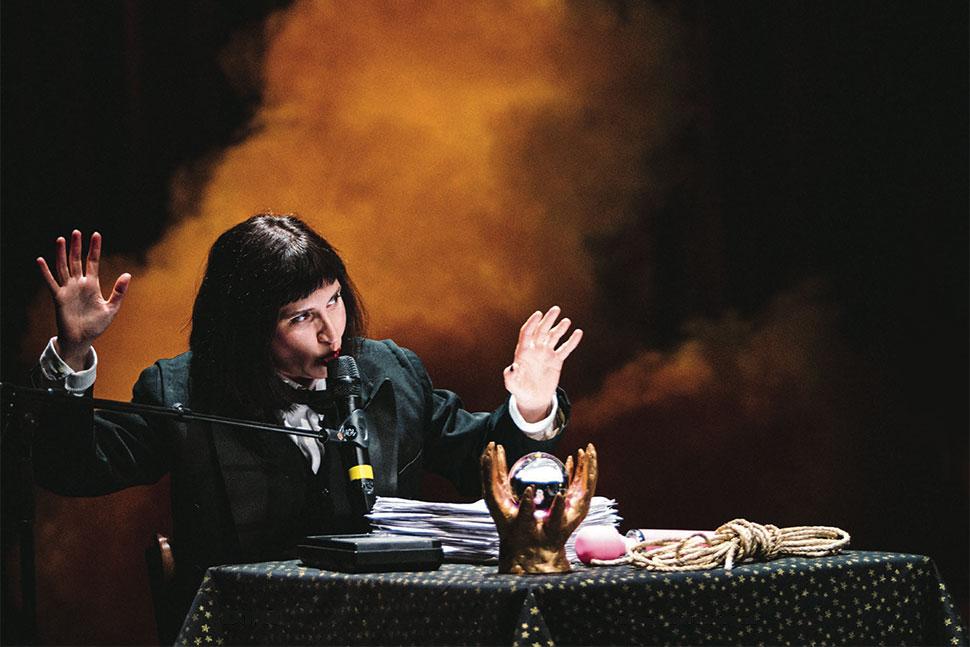| Year and length: | 2025 – 220’ (Italian premiere) |
|---|---|
| Concept, text and direction: | Carolina Bianchi |
| With: | Carolina Bianchi, Chico Lima, Flow Kountouriotis, José Artur, Kai Wido Meyer, Lucas Delfino, Rafael Limongelli, Rodrigo Andreolli, Tomás Decina |
| Dramaturgy and research partnership: | Carolina Mendonça |
| Dialogue on theory and dramaturgy: | Silvia Bottiroli |
| Technical direction, sound design, original music: | Miguel Caldas |
| Direction assistance: | Murillo Basso |
| Set design: | Carolina Bianchi, Luisa Callegari |
| Art direction and costume design: | Luisa Callegari |
| Lighting design: | Jo Rios |
| Videos and screenings: | Montserrat Fonseca Llach |
| Choreographic revival of prologue and movement advice: | Jimena Pérez Salerno |
| Live camera and artistic support: | Larissa Ballarotti |
| Photography: | Mayra Azzi |
| Internship: | Fernanda Libman |
| Stage management and production support: | AnaCris Medina |
| Production assistance: | Zuzanna Kubiak |
| Production direction, tour management, communication: | Carla Estefan |
| International relations, production, diffusion: | Metro Gestão Cultural (BR) |
| Production: | Metro Gestão Cultural, Brazil Carolina Bianchi Y Cara de Cavalo |
| Co-production: | KVS - Théâtre royal flamand, Brussels; Theater Utrecht; La Villette, Paris; Festival d’Automne, Paris; Comédie de Genève; Internationales Sommerfestival Kampnagel, Hamburg; Les Célestins, Théâtre de Lyon; Kunstenfestivaldesarts, Brussels; Wiener Festwochen Holland Festival, Amsterdam; Frascati Producties, Amsterdam; HAU Hebbel am Ufer, Berlin; Le Maillon, Théâtre de Strasbourg - Scène européenne |
| With the support of: | Tax Shelter da Belgische Federale Overheid The Ammodo Foundation, the Netherlands |
Carolina Bianchi / Cara de cavalo - Cadela Força Trilogy, Chapter II: The Brotherhood

Description
The second chapter of CADELA FORÇA TRILOGY is entitled The Brotherhood. Brazilian author and theatre director Carolina Bianchi, along with the collective Cara de Cavalo, interrogates the complexity of masculine pacts, the possible origins of brotherhood, and their codes – many of which are inscribed in violence, and perpetuate rape and sexual abuse. Bianchi frames this investigation in the context of contemporary art and, in particular, theatre. The objective of the show is far from an oversimplification of its subject. Using principles of theatre, Bianchi repeatedly confronts the confusion between an aversion to, and a fascination with, male power dynamics – creating links between representation and real trauma, structures of power in art and radical poetry, the origins of misogyny and a sexuality in crisis. The show itself becomes a trap, weakening Bianchi’s authorship as she begins to suffer the consequences of examining this brotherhood so closely, gradually transforming into a ghost haunted by her own desires.